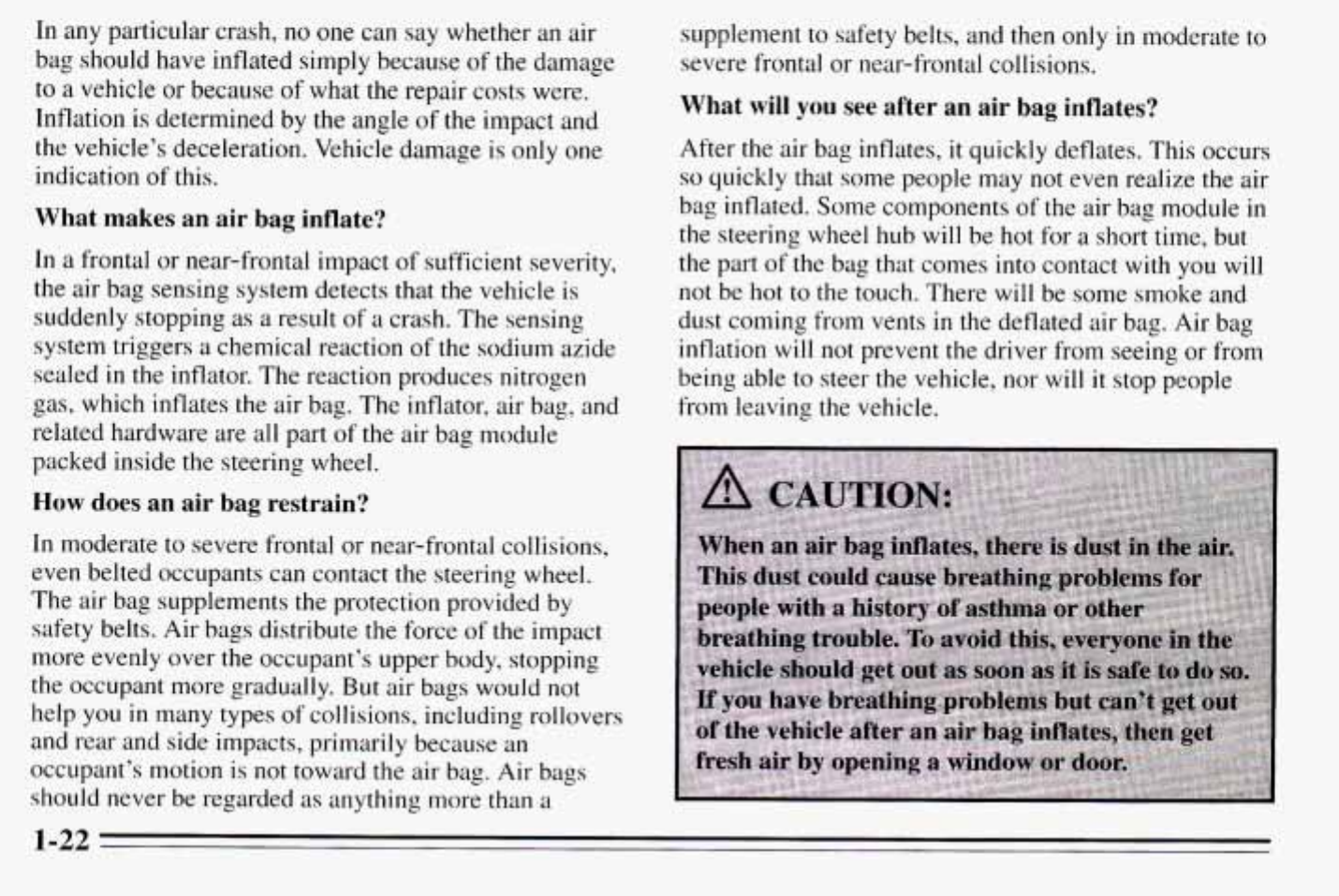
In any particular crash,
no
one can say whether
an
air
bag should have inflated simply because
of
the damage
to
a vehicle
or
because of what
the
repair costs were.
Inflation
is determined by the angle
of
the impact and
the vehicle’s deceleration. Vehicle damage is only one
indication of this.
What makes an air bag inflate?
In
a
frontal or near-frontal impact of sufficient severity,
the air bag sensing system detects
that
the
vehicle is
suddenly stopping as a result of a crash. The sensing
system triggers a chemical reaction of the sodium azide
sealed
in
the inflator. The reaction produces nitrogen
gas, which inflates the air bag.
The
inflator, air bag, and
related hardware are all part
of
the air bag module
packed inside the steering wheel.
How does an air
bag
restrain?
In
moderate to severe frontal or near-frontal collisions,
even belted occupants can contact the steering wheel.
The air bag supplements the protection provided
by
safety belts. Air bags distribute the force
of
the impact
more evenly over
the
occupant’s upper body, stopping
the occupant more gradually. But air bags would
not
help
you
in
many types
of
collisions, including rollovers
and rear and side impacts, primarily because
an
occupant’s motion is not toward the air bag. Air bags
should never be regarded
as
anything more
than
a
supplement to safety belts, and then only
in
moderate to
severe frontal or near-frontal collisions.
What will
you
see after an air bag inflates?
After the air bag inflates,
it
quickly deflates. This occurs
so
quickly
that
some people may not even realize the air
bag inflated. Some components
of
the air bag module in
the steering wheel hub will be
hot
for a short time, but
the part
of
the bag that comes into contact with you will
not be hot
to
the touch. There will be some smoke and
dust coming from vents in the deflated air bag. Air bag
inflation will
not
prevent
the
driver from seeing or from
being able
to
steer the vehicle, nor will
it
stop people
from leaving the vehicle.
1-22


















